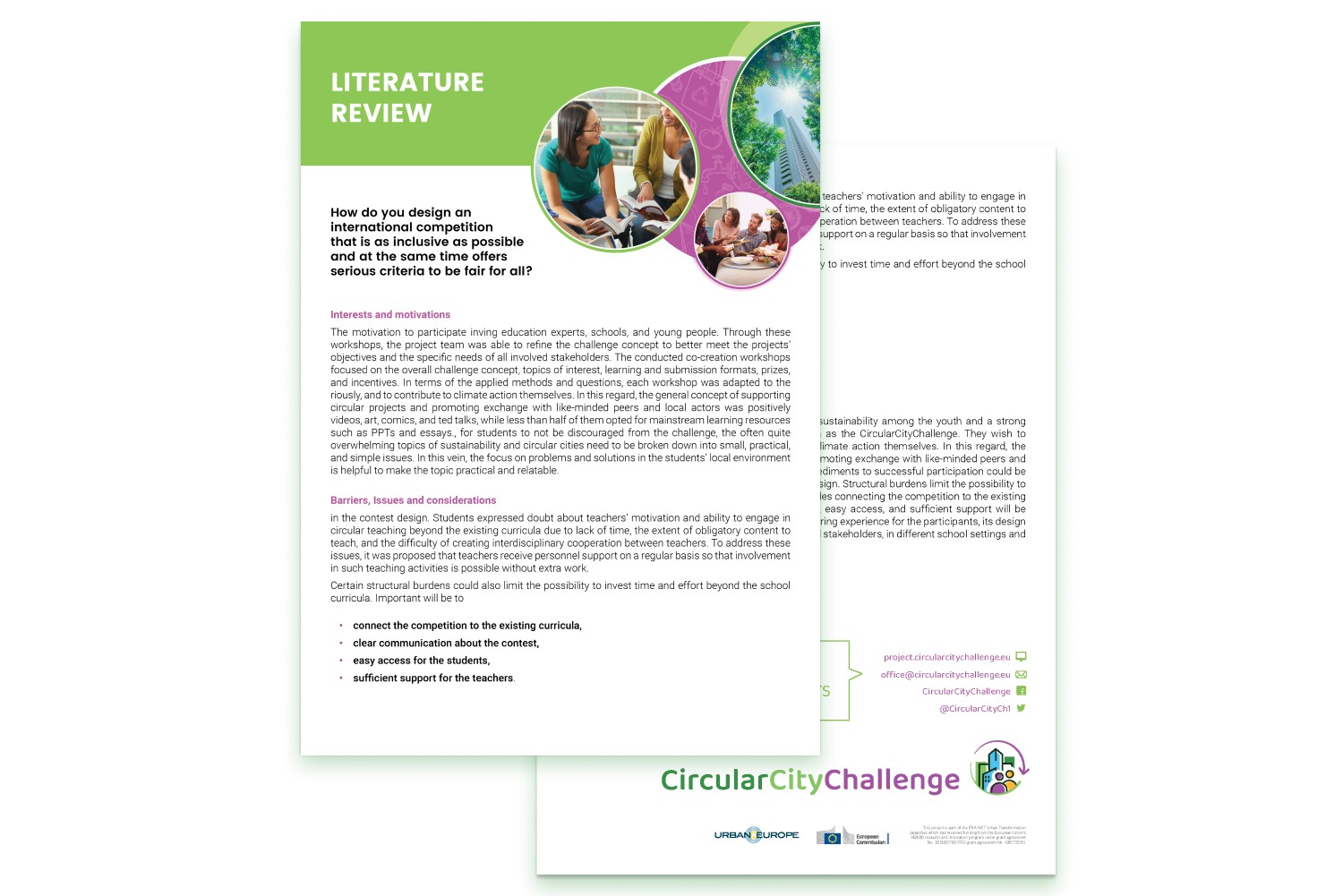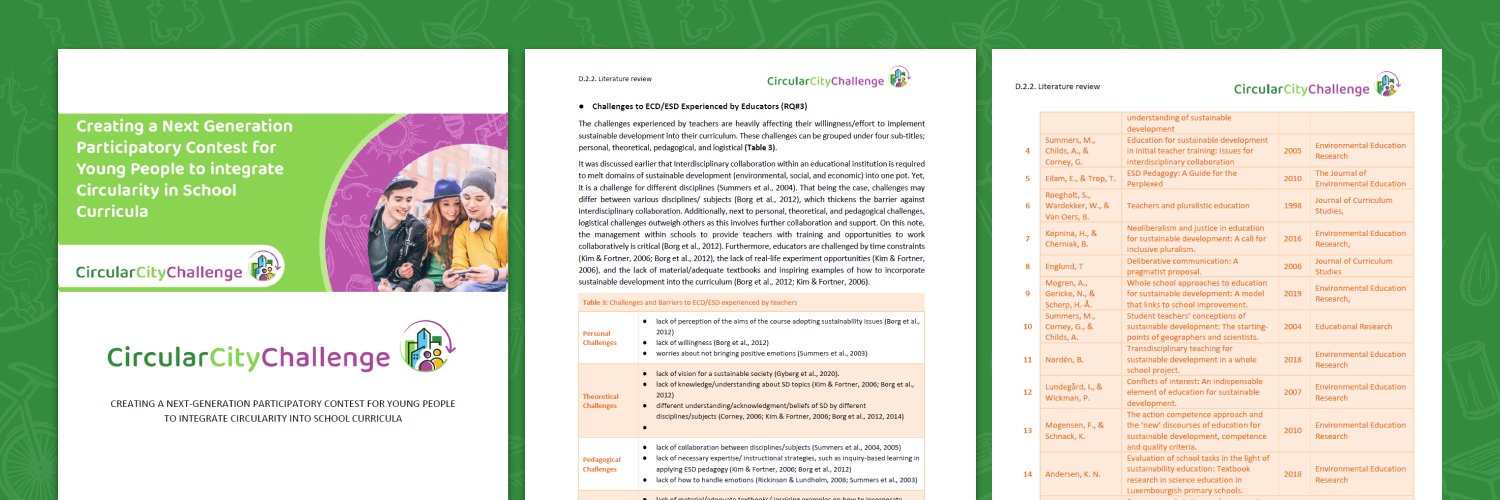
LITERATURE REVIEW

Learning about novel approaches to enhance circularity education
We wanted to find out, what role circular cities play for achieving sustainable development and how to convey these approaches in schools. Project partners from Maastricht University delved deep into the existing body of literature to answer: What are circular cities? How does ESD support education for circular development? What are the potential challenges in ESD to teaching circular development?
The potential of circular cities
Worldwide, cities are the places where most production and consumption takes place. As urbanization is progressing rapidly, cities play a vital role in today’s pressing challenges of climate change, resource depletion, and waste generation. Circularity, to put it simply, is based on the actions of looping, regenerating, adapting, localizing, substituting and sharing resources (EMF, 2015). But the circular city is about more than businesses applying these principles (Marin & De Meulder, 2018). The circular city, as a complex social system, relies on the engagement of local communities. Through such collective efforts, social inequality and the ecological and economic crisis can be addressed simultaneously (Fusco Girard & Nocca 2019). However, participating in community-led projects requires specific knowledge, values, and competencies. For the circular transition to be experimental, collaborative and just, adequate education is therefore a key requirement.
Approaches and methods of the education for sustainable development (ESD)
ESD emerged from the need to address the dramatic planetary challenges by fostering the creation of knowledge and skills to reach sustainable communities (UNESCO, 2020). Achieving this aim clearly requires interdisciplinary and holistic teaching. Interdisciplinary refers to the collaboration between teachers of different subjects to form a knowledge basis which entails all dimensions of sustainable development. A more holistic approach would furthermore comprise both fact-based methods (presentations) and collaborative methods (small group research projects, class debates and group discussions). Especially the latter are key for acquiring the willingness and capacity of students to engage in arguments, collaborate with others, find weaknesses in their own arguments, and explore their own contributions (Roegholt et al., 1998).
To build the foundation for innovative, collaborative, and local community-led initiatives, competences for action are crucial. Yet, scholars indicate that the action-oriented approach does not find a prominent space in the ESD context (Mogensen & Schnack, 2010; Kowasch, 2017; Andersen, 2018). While this illustrates the relevance of the CircularCityChallenge, current limitations and barriers in the education for sustainable development need to be taken into account.
Challenges in ESD experienced by educators
Teachers today are facing personal, theoretical, pedagogical and logistical barriers to implementing interdisciplinary, holistic and action-based sustainability education. Cross-subject collaboration, in particular, is rarely applied, since it requires extra effort for each tradition to broaden their understanding and coordinate work between subjects (Summers et al., 2004, 2005; Borg et al., 2012). Furthermore, educators face time constraints (Kim & Fortner, 2006; Borg et al., 2012), a lack of real-life experiment opportunities (Kim & Fortner, 2006), teaching material and inspiring examples (Borg et al., 2012; Kim & Fortner, 2006).
The literature review has revealed important cornerstones of education for sustainable development and highlighted the importance of the circular approach in this regard. Drawing on the experiences already made and challenges brought to light, the CircularCityChallenge will explore promising pathways for educating young students to become part of collectively active communities.
